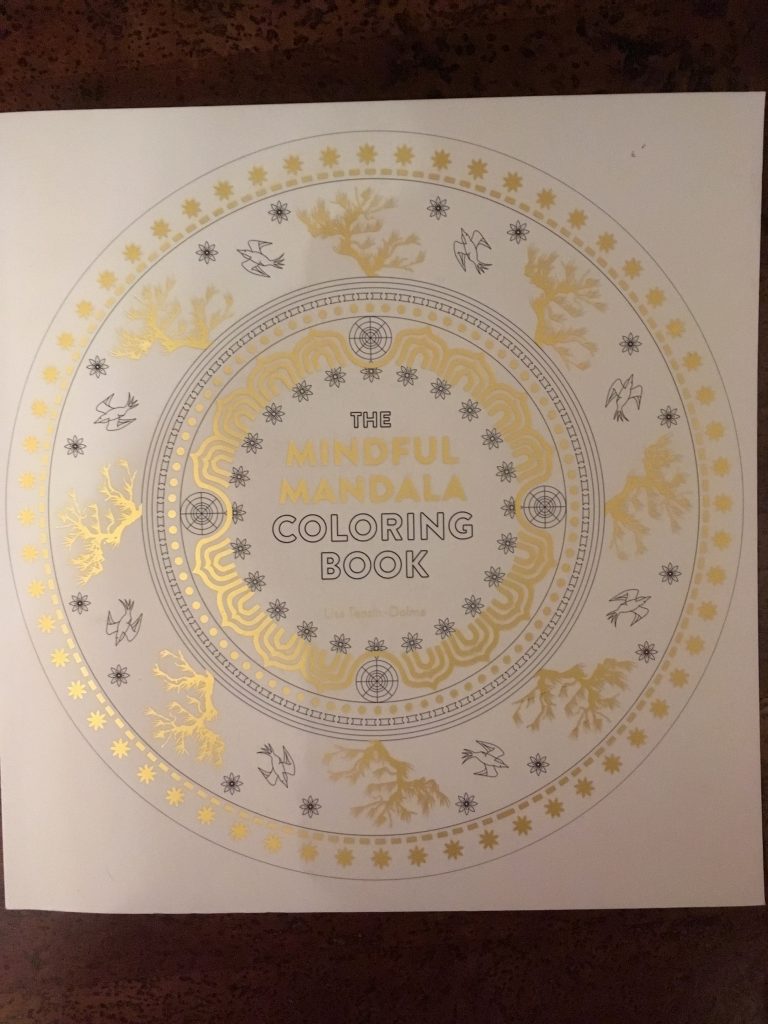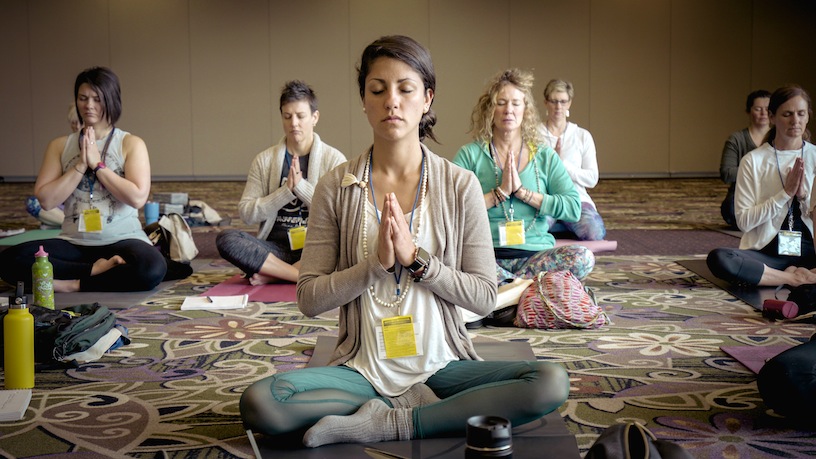According to Wikipedia: “An early adopter or lighthouse customer, is an early customer of a given company, product, or technology. Late majority adopt an innovation after the average participant. These individuals approach an innovation with a high degree of skepticism and after the majority of society has adopted the innovation. Late majority are typically skeptical about an innovation.
When it came to adult colouring books, I fell into the latter category. I had even been to a couple of “colouring parties”. Borrowing other people’s materials, believing it to be silly but still wanting the time spent with friends.
Having recently become a Certified Lifestyle Meditation Teacher, I thought adding a colouring book to my mindfulness/meditation practice would be a wonderful addition. Colouring in this way is often used in children’s yoga classes (a tool I have in fact used in teaching kids yoga).
Many occupational therapists prescribe colouring books and patients come back and tell them how beneficial they find them to be. A friend who recently had surgery and was laid up in bed, was able to pass the time with colouring books. When you need to shift focus or practice stress reduction, break these books out. They have so many uses and purposes that many are not aware of, beyond the obvious outcomes of beauty and enjoyment. Let’s look at their uses a little closer.
The “prescription” of adult colouring, stems all the way back to the late psychologist Carl Jung. He used it thinking it would help his patients access their subconscious and new self-knowledge. We now know that many psychologists suggest this to patients as an alternative to medication, as a means of relaxation, and as a calming tool. It can help the individual focus on the act of colouring intricate pictures for hours on end, vs. focusing on intrusive and troubling thoughts.
Adult colouring books can help with a number of emotional and mental health issues. For many, boredom, lack of structure, and stress are the greatest triggers they have. This applies to individuals with obsessive-compulsive disorders, anxiety disorders, stress disorders, depressive disorders, eating and binge eating disorders, anger management issues, and substance abuse issues. The time and focus that adult colouring takes, helps the individual remove the focus from the negative issues and habits, and focus them in a safe and productive way.
These activities can help tremendously with individuals with Post Traumatic Stress Disorder (PTSD), anxiety, and stress issues, as they calm down our amygdala. The part of the brain that controls our fight or flight response, and keeps individuals in a heightened state of worry, panic, and hyper-vigilance, when it is active. Colouring and focusing on this harmless and calming activity, can actually turn that response down, and let your brain have some much needed rest and relaxation. This can be an exceptionally productive and welcome outlet for these individuals.
Colouring also brings us back to a simpler time. An activity that can invoke the easier and happier times of childhood. A time when we did not have as many responsibilities, and could just do something because we wanted too, for the pure joy of it. To be able to tap into this time and these emotions is very cathartic and enjoyable. It can take you out of your present stresses and worries for even a few hours at a time, which can have an exceptionally recuperative effect.
Believe it or not, colouring has intellectual benefits as well. It utilizes areas of the brain that enhance focus and concentration. It also helps with problem solving and organizational skills. Our frontal lobes are responsible for these higher level activities and functions of the brain, and colouring detailed pictures activates all those properties.
Colouring utilizes both hemispheres of the brain, right and left. When we are thinking about balance, colour choices, applying coloured pencil to paper, we are working on problem solving and fine motor skills.
This is another method of practicing mindfulness, which has therapeutic and health benefits. This can help us replace negative thoughts with positive and pleasant ones. Doing therapeutic artwork can help reduce feelings of anxiety and unpleasantness associated with lengthy medical treatments. The focus we place on the project at hand, and on an object can replace negative and unhelpful thoughts from entering our minds. The step of acting and doing vs. observing is a powerful deterrent to focusing on physical or emotional pain.
Adult colouring books clearly help serve many purposes that are beneficial. They can be focused, therapeutic, relaxing, calming, problem solving, and organizational. Head down to your local bookstore, discount department store or dollar store and find a colouring book that appeals to you and some nice coloured pencils. And don’t forget that you’ll now have beautiful artwork which you can hang on your fridge!

